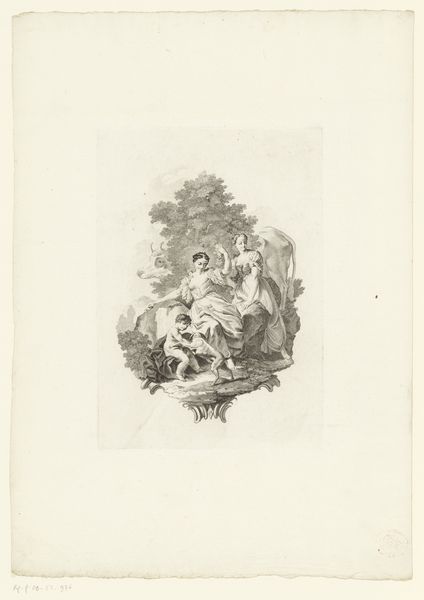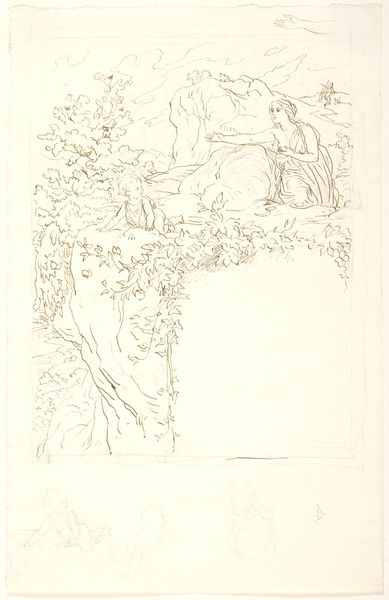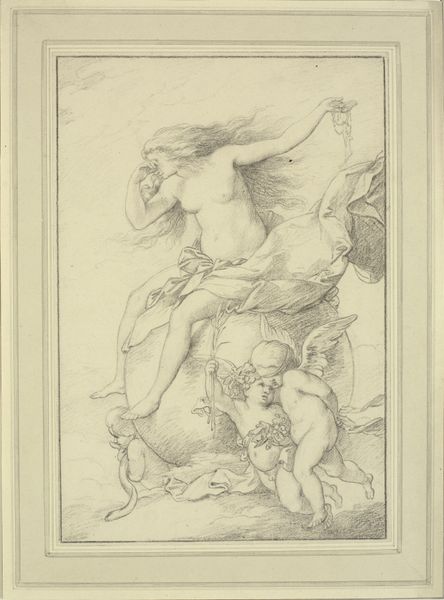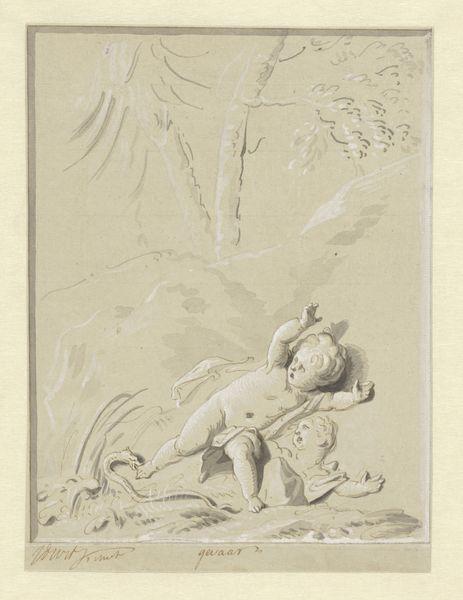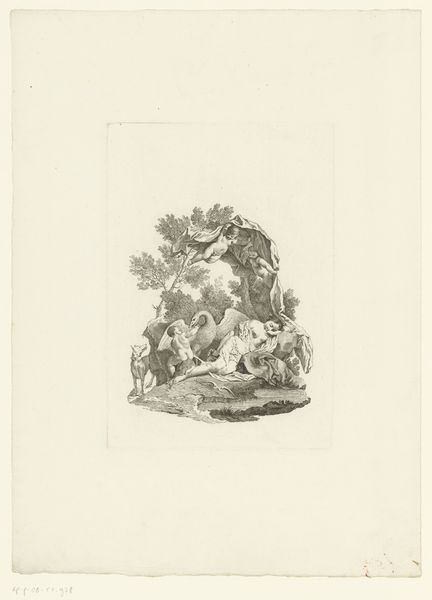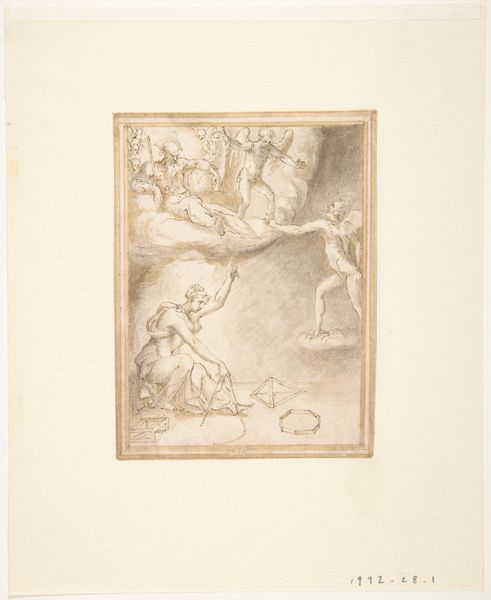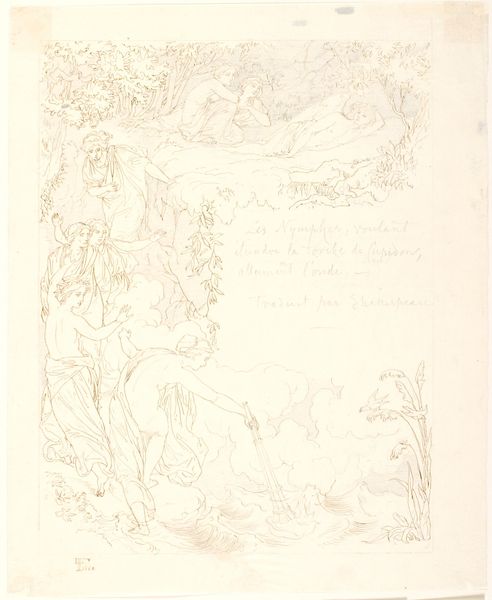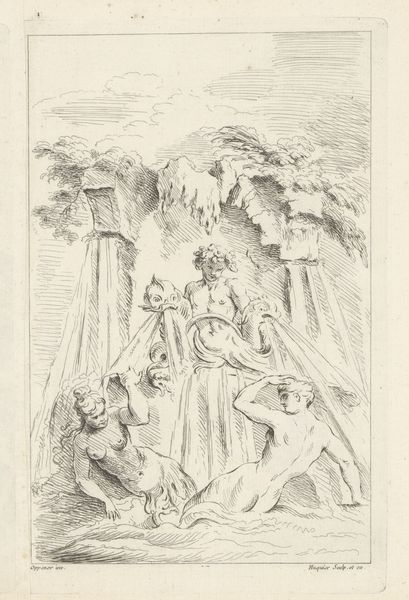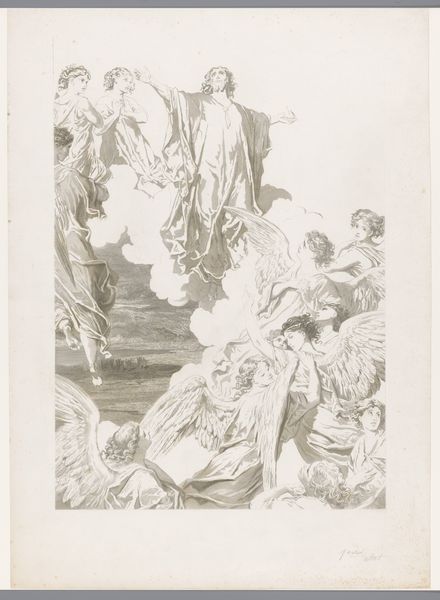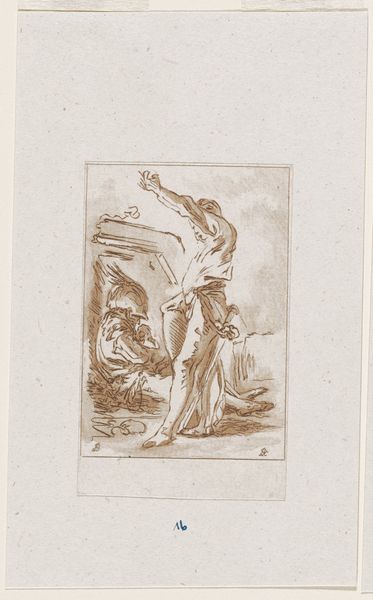
Die Ruhe auf der Flucht nach Ägypten (zur Ausführung im Städelschen Kunstinstitut im Palais des Thurn und Taxisschen Oberpostmeisters Freiherr von Vrints-Treuenfeld in der Neuen Mainzer Straße) c. 1840 - 1847
0:00
0:00
drawing, etching, intaglio, paper, pencil
#
drawing
#
narrative-art
#
etching
#
intaglio
#
landscape
#
etching
#
figuration
#
paper
#
romanticism
#
pencil
#
history-painting
Copyright: Public Domain
Curator: Here we have Philipp Veit's "Die Ruhe auf der Flucht nach Ägypten", or "The Rest on the Flight into Egypt," likely created between 1840 and 1847. It’s an etching, pencil, and ink on paper. Editor: A whisper of a drawing, almost ethereal. The linear work and use of delicate hatching give it a wonderful tonal range, the forms seem lit from within. The composition—simple but classically balanced—focuses my eye on that central maternal figure. Curator: Indeed. Veit has deployed his subtle command of line to direct our gaze, shaping not just forms but also emotional impact. Notice the stark simplification of landscape elements—trees are mere suggestions, rocks lightly shaded. The focus is deliberately figurative. Editor: Absolutely. And I can't help but immediately think about the Holy Family as symbols—archetypes even—of refuge and sanctuary. The flight into Egypt is, after all, about escaping persecution. It’s been a loaded subject through history and across cultures. It's hard to ignore that resonance here. Curator: I see your point. But looking purely at its construction, the use of contour creates a kind of contained monumentality. Each element of form contributing to the central visual balance of that scene of care. It's interesting how Veit implies volumes and shadows with just these linear details. Editor: Yes, but beyond its visual construction, isn’t Veit evoking broader spiritual narratives? Mary’s posture—her tenderness as she looks at the baby—all those universally recognizable gestures are saturated with a legacy of the Madonna and Child motif. These are symbols pregnant with hope and survival, aren't they? The choice of the "rest" is a direct signifier here. Curator: Well, the formal vocabulary of Romanticism definitely favored symbolic interpretation. Yet the work itself operates on more than just symbolic or narrative registers, I think. Veit is clearly investigating form, how the most efficient applications of line can conjure complex figuration on a flat plane. Editor: Maybe both registers coexist! The careful crafting of form amplifying, rather than diminishing, symbolic intent? Curator: Perhaps. It invites contemplation in any case. Editor: Yes, leaving us to consider where technique meets meaning.
Comments
No comments
Be the first to comment and join the conversation on the ultimate creative platform.


